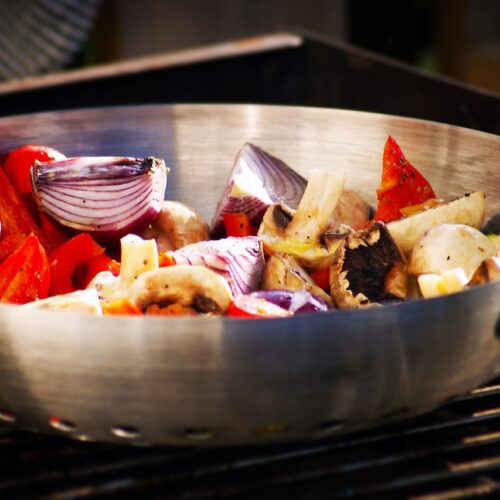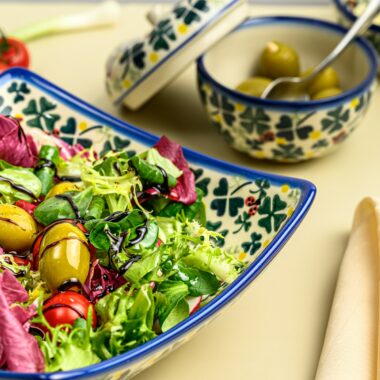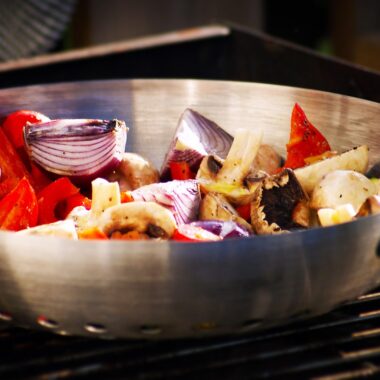Diwali, the Hindu festival of lights, is a time of joy, togetherness, and indulgence. Celebrated with fervor across India and the Indian diaspora, it marks the triumph of light over darkness and good over evil. Central to the festivities are the delectable sweets and refreshing beverages that grace every household. From syrupy gulab jamuns to creamy lassis, these treats are more than just food—they’re a celebration of culture, tradition, and love. In this article, we explore 12 iconic Indian sweets and lassis that make Diwali truly special, diving into their origins, preparation, and significance.
The Significance of Sweets and Lassis in Diwali
Diwali is synonymous with sharing and gifting sweets, or mithai, which symbolize prosperity and happiness. Families prepare and exchange homemade delicacies, while markets brim with colorful boxes of sweets. Lassis, the yogurt-based drinks, complement these rich desserts, offering a cooling balance to the festive indulgence. Together, they create a sensory experience that’s integral to the Diwali spirit. Let’s explore six traditional sweets and six lassis that elevate the festival.
Six Iconic Diwali Sweets
1. Gulab Jamun
Gulab jamun, often dubbed the king of Indian sweets, is a must-have during Diwali. These soft, golden-brown balls are made from khoya (reduced milk solids) or milk powder, deep-fried, and soaked in a fragrant sugar syrup infused with cardamom and rose water. Originating from Persian influences, gulab jamun is a symbol of indulgence. The name, translating to “rose berry,” reflects its syrupy sweetness and rose-infused flavor. During Diwali, families serve warm gulab jamuns to guests, their melt-in-the-mouth texture sparking joy.
Preparation Tip: To achieve the perfect texture, ensure the dough is soft but not sticky, and fry the balls on low heat to cook them evenly. Soak them in warm syrup for at least an hour to absorb the flavors.
2. Jalebi
Jalebi’s vibrant orange spirals are a Diwali staple, their crisp exterior giving way to a juicy, syrup-soaked center. Made by fermenting a batter of flour and yogurt, piping it into hot oil, and soaking it in saffron-infused sugar syrup, jalebis are a feast for the eyes and palate. Their origins trace back to the Middle East, but India has embraced them as its own. During Diwali, jalebis are often paired with rabri (thickened milk) for an extra layer of decadence.
Cultural Note: In some regions, jalebis are offered to deities during Diwali puja, symbolizing sweetness in life.
3. Barfi
Barfi, a fudge-like sweet, comes in countless variations—kaju (cashew), pista (pistachio), or plain milk barfi. Made by cooking milk solids with sugar and ghee, barfi is often garnished with edible silver foil (vark) for a festive touch. Its creamy texture and subtle sweetness make it a versatile Diwali treat. Kaju barfi, with its diamond-shaped cuts, is especially popular in North India, where it’s exchanged as a luxurious gift.
Preparation Tip: Stir the mixture continuously over low heat to avoid burning, and spread it evenly on a greased tray for uniform thickness.
4. Ladoo
Ladoos are synonymous with celebrations in India, and Diwali is no exception. Besan ladoo, made in North India from roasted gram flour, ghee, and sugar, is a favorite for its nutty flavor and crumbly texture. In South India, rava ladoo (made with semolina) or coconut ladoo takes center stage. These round delights are easy to make and store, making them a practical yet delicious choice for Diwali gatherings.
Fun Fact: Ladoos are often associated with Lord Ganesha, the remover of obstacles, and are offered during Diwali prayers for blessings.
5. Rasgulla
Hailing from West Bengal, rasgulla is a spongy, syrup-soaked sweet made from chhena (fresh paneer) balls cooked in light sugar syrup. Its airy texture and mild sweetness make it a refreshing contrast to heavier Diwali sweets. Rasgullas are a symbol of Bengali culinary heritage and are increasingly popular across India during the festival. Their white, glossy appearance adds elegance to Diwali dessert platthappy and prosperous life.
Preparation Tip: Knead the chhena until smooth to ensure soft, crack-free rasgullas, and cook them in a spacious pot to allow expansion.
6. Halwa
Halwa, a dense, pudding-like dessert, is a Diwali favorite in various forms—moong dal halwa, sooji halwa, or gajar (carrot) halwa. Moong dal halwa, popular in Rajasthan, is made by slow-cooking lentil paste with ghee, sugar, and nuts, resulting in a rich, aromatic treat. Gajar halwa, vibrant with grated carrots, is a winter specialty that aligns with Diwali’s timing. Garnished with almonds and pistachios, halwa is a warm, comforting end to a festive meal.
Cultural Note: Halwa is often prepared as prasad (offering) during Diwali, shared with family and neighbors to spread blessings.
Six Refreshing Lassis for Diwali
Lassis, with their creamy texture and cooling properties, are the perfect accompaniment to Diwali’s rich sweets. Made from yogurt, these drinks can be sweet, salty, or flavored with fruits and spices. Here are six lassis to elevate your Diwali celebrations.
1. Classic Sweet Lassi
The classic sweet lassi is a simple yet divine blend of yogurt, sugar, and a pinch of cardamom. Served chilled, it’s a refreshing counterpoint to the syrupy sweets of Diwali. In North India, it’s often garnished with a dollop of malai (cream) or crushed pistachios for added richness.
Preparation Tip: Blend the yogurt with sugar and ice until frothy, and adjust sweetness to taste. A dash of rose water can enhance the flavor.
2. Mango Lassi
Mango lassi, with its vibrant yellow hue, is a crowd-pleaser. Made by blending yogurt with fresh or canned mango pulp, sugar, and a hint of cardamom, it’s a tropical delight that complements Diwali’s festive vibe. Its creamy texture and fruity sweetness make it a hit among kids and adults alike.
Cultural Note: In some households, mango lassi is served as a festive drink to symbolize abundance, as mangoes are considered the “king of fruits” in India.
3. Salted Lassi
Salted lassi, or namkeen lassi, is a savory alternative favored in Punjab and other northern states. Made with yogurt, water, roasted cumin powder, and a pinch of black salt, it’s a cooling drink that balances the richness of Diwali sweets. Its tangy, spicy notes make it a unique addition to the festive menu.
Preparation Tip: Roast cumin seeds and grind them fresh for a bold flavor. Serve with a sprinkle of chaat masala for an extra zing.
4. Rose Lassi
Rose lassi, infused with rose syrup or essence, is a fragrant and slightly floral drink that adds elegance to Diwali celebrations. The pale pink hue, achieved with natural rose syrup, makes it visually appealing. Blended with yogurt, sugar, and ice, it’s a refreshing treat that pairs beautifully with jalebis or barfi.
Fun Fact: Rose is a traditional flavor in Indian cuisine, often associated with love and festivity, making it apt for Diwali.
5. Kesar Pista Lassi
Kesar pista lassi, infused with saffron (kesar) and pistachios (pista), is a luxurious drink for Diwali. The saffron lends a golden hue and earthy aroma, while crushed pistachios add texture and nuttiness. This lassi is a nod to India’s royal culinary traditions and is perfect for festive gatherings.
Preparation Tip: Soak saffron strands in warm milk for 10 minutes before blending to release their full flavor and color.
6. Fruit Lassi
Fruit lassi, made with seasonal fruits like strawberries, bananas, or pineapple, is a modern twist on the classic. Blended with yogurt and a touch of honey or sugar, it’s a versatile drink that caters to diverse tastes. During Diwali, a mixed fruit lassi with pomegranate seeds or mango chunks adds a colorful, festive touch.
Cultural Note: Fruits are often offered during Diwali puja, and incorporating them into lassi reflects the season’s bounty.
Bringing It All Together: A Diwali Feast
A Diwali spread is incomplete without a balance of sweets and lassis. Imagine a platter of golden gulab jamuns and crispy jalebis alongside a tray of kaju barfi and besan ladoos, their textures and flavors complementing each other. Pair these with tall glasses of mango lassi and kesar pista lassi, their creamy coolness cutting through the sweetness. For those who prefer savory, a salted lassi can refresh the palate between bites of rich moong dal halwa or rasgulla.
Tips for a Memorable Diwali Spread
- Presentation: Arrange sweets on decorative platters with edible silver foil or dried fruits for a festive look. Serve lassis in clay pots (matkas) or copper glasses for an authentic touch.
- Balance: Offer a mix of heavy (gulab jamun, halwa) and light (rasgulla, ladoo) sweets to cater to different preferences. Similarly, include both sweet and savory lassis.
- Sharing: Diwali is about community. Pack sweets in eco-friendly boxes for gifting, and serve lassis in small glasses for easy sharing during gatherings.
- Homemade vs. Store-Bought: While homemade sweets and lassis carry a personal touch, trusted sweet shops offer high-quality options for busy households.
The Cultural Essence of Diwali Treats
Sweets and lassis during Diwali are more than culinary delights; they’re a bridge to tradition and togetherness. Preparing these treats often involves multiple generations, with recipes passed down through families. The act of sharing sweets with neighbors and offering lassis to guests embodies the spirit of Diwali—spreading light and love. Each sweet, from the labor-intensive moong dal halwa to the quick rava ladoo, tells a story of regional diversity and cultural pride.
Regional Variations
- North India: Dominated by gulab jamun, jalebi, and salted lassi, with an emphasis on ghee-based sweets.
- West Bengal: Rasgulla and sandesh reign supreme, often paired with fruit-based lassis.
- South India: Coconut ladoo and payasam (a milk-based dessert) are popular, with plain sweet lassi as a staple.
- Western India: Gujarati households favor ghari (a sweet puri) and mango lassi for a festive twist.
Health-Conscious Diwali Options
For those seeking lighter alternatives, Diwali sweets and lassis can be adapted:
- Sweets: Use jaggery instead of sugar for ladoos or halwa, or make baked versions of gulab jamun to reduce oil content.
- Lassis: Opt for low-fat yogurt or plant-based alternatives like coconut yogurt, and sweeten with natural sweeteners like honey or dates.
Conclusion
Diwali is a celebration of light, love, and indulgence, and nothing captures this essence better than the sweets and lassis that adorn festive tables. From the syrupy delight of gulab jamun to the refreshing tang of salted lassi, these 12 treats offer a taste of India’s rich culinary heritage. As you light diyas and share laughter with loved ones this Diwali, let these sweets and lassis bring sweetness and balance to your celebrations. May your festival be as vibrant and joyful as the flavors on your plate!

















